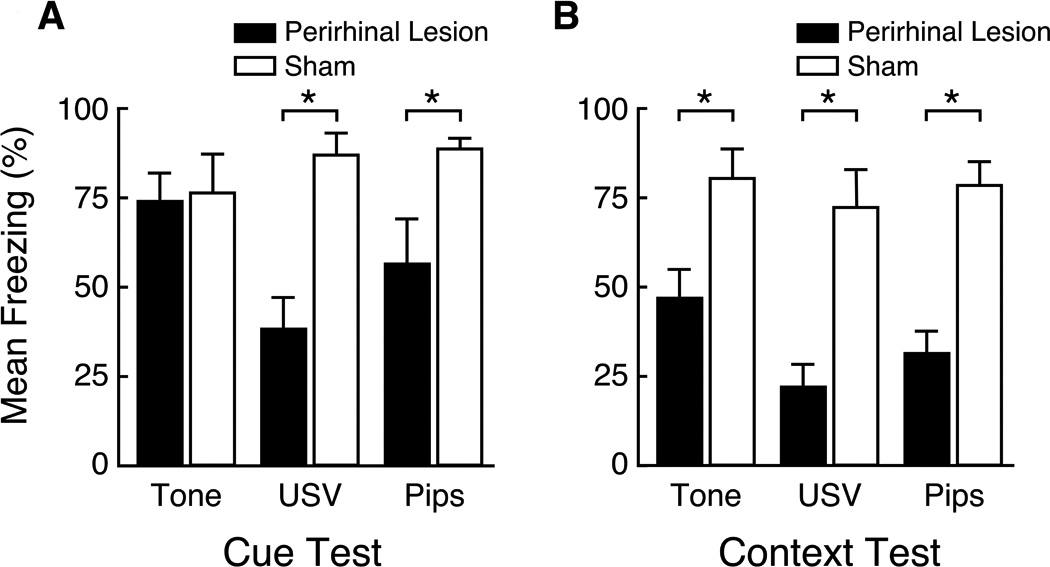Figure 3.

Neurotoxic PRC lesion effects on delay cue conditioning and context conditioning. Mean levels of freezing are shown in PRC-lesioned rats (solid bars) and sham operated controls (open bars). Asterisks denote significant differences between the sham-operated and PRC-lesioned rats (p < 0.05). Upward lines on the bars represent the standard error of the mean. A. Animals were conditioned to one of three CSs: a 19 kHz continuous tone (labeled Tone), a 19 kHz USV, or a 19 kHz discontinuous tone (labeled Pips). The USV is the one shown in Fig. 2C. After multiple CS-US pairings, all three cues elicited robust freezing in control animals. As expected, PRC damage had no significant effect on delay conditioning to the continuous tone. However, PRC damage significantly impaired conditioning to both the USV (Cohen's d = 1.4) and the discontinuous tone (d = 1.7). There were no significant differences between the USV and Pips groups. B. PRC damage profoundly impaired context conditioning in all three cue groups (mean d = 1.8). There were no significant differences among cue groups. Modified from Kholodar-Smith et al. (2008a).
